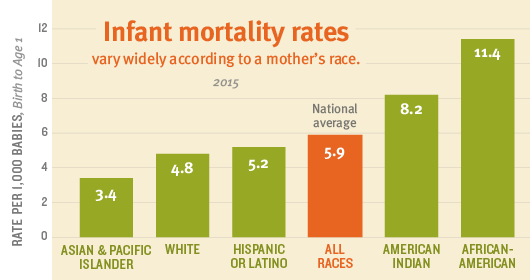That Scary Infant Mortality Rate? Here's What You Need to Know
News outlets across the nation have reported on the alarmingly high infant mortality rate among babies born to African-American mothers.
To recap: This statistic tells us how many babies die in their first year of life, and any reference to race refers to the mother’s race — not the child’s.
The most current infant mortality rate on record, across the nation and all races, is 5.9 deaths for every 1,000 babies born alive. This annual rate translates to nearly 23,500 babies dying before their first birthday.
When this statistic is sorted by a mother’s race, disquieting disparities appear. For instance:
Mothers who identify as Asian and Pacific Islander experience 3.4 infant deaths for every 1,000 babies born alive. Among white mothers, this rate jumps slightly to 4.8 deaths for every 1,000 babies born alive. These two racial categories represent one end — the decisively better end — of a statistical spectrum.
African-American mothers occupy the other extreme — experiencing 11.4 infant deaths for every 1,000 babies born alive. This rate means that, compared to their Asian and Pacific Islander counterparts, African-American mothers are three times more likely to lose a baby in their first year of life.
The details vary widely for each child death included in this statistic. But, generally speaking, experts link infant mortality to a number of issues, including the mother’s well-being, socioeconomic conditions, public health practices, and the availability and accessibility of health care for both infants and pregnant women.
Go to the KIDS COUNT Data Center to see how infant mortality by race has changed in the last decade.







